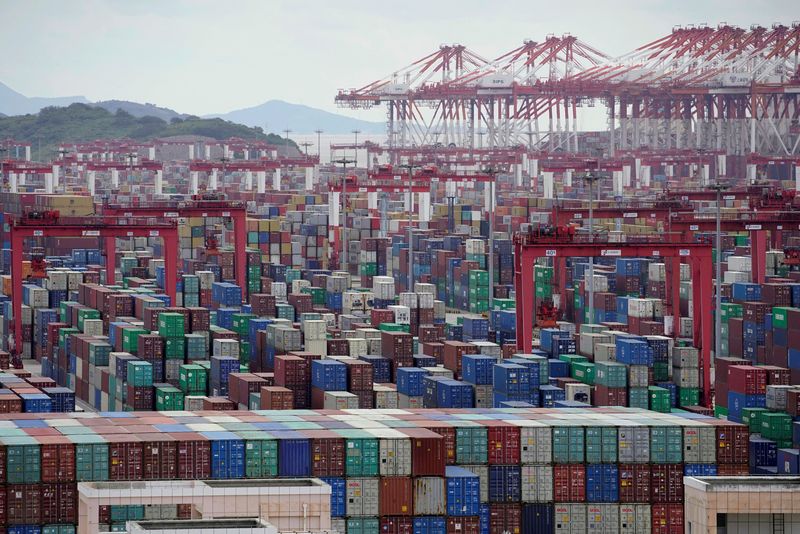By Joe Cash
BEIJING (Reuters) -China's exports and imports extended declines in August as the twin pressures of sagging overseas demand and weak consumer spending at home squeezed businesses in the world's second-largest economy, although the falls were slower than expected.
While the trade numbers follow a run of other indicators showing a possible stabilisation in China's downturn, they remain far short of the growth economists anticipated earlier this year when the government abandoned its strict COVID curbs.
Exports dropped 8.8% in August year-on-year, customs data showed on Thursday, beating a forecast of 9.2% in a Reuters poll and off a 14.5% drop in July. Meanwhile, imports contracted 7.3%, slower than an expected 9.0% decline and last month's 12.4% fall.
China's economy is at risk of missing Beijing's annual growth target of about 5% as officials wrestle with a worsening property slump, weak consumer spending and tumbling credit growth, leading analysts to downgrade forecasts for the year.
"The trade data is marginally better, but I don't think we should be reading too much into that: trade is still contracting," said Frederic Neumann, chief Asia economist at HSBC.
"There is a bit of a sign here of stabilisation, but I think there's still a long way to go," he added.
Beijing has announced a series of measures in recent months to shore up growth, with the easing of some borrowing rules last week by the central bank and the top financial regulator to aid homebuyers.
But analysts warn the steps may have little impact with a labour market recovery slowing and household income expectations uncertain.
"The figures suggest the headwinds remain, despite some marginal improvement," said Zhou Hao, chief economist at Guotai Junan International. "Looking ahead, whether China's trade growth has already hit the bottom will hinge on several factors, the most important of which is obviously domestic demand."
Governments around the world are nervous about China's economic slowdown with many exporting nations highly dependent on the country's market for growth.
South Korean shipments to China, a leading indicator of the latter's imports, dropped just a fifth last month, slowing from a decrease of 27.5% a month earlier, offering another nod to conditions stabilising in China.
Declines in trade with the United States, Southeast Asia and Australia also narrowed.
However, trade with Japan dropped sharply, with outbound shipments from China to its neighbour down 20% in August year-on-year, while imports worsened by 17%.
Policymakers in Tokyo fear China's deepening economic woes could hit Japan's fragile recovery, especially if Beijing fails to shore up demand with meaningful stimulus.
Crude oil shipments to China were 31% higher in August than the same period last year, and up 21% on July, while soybean imports in August also jumped 31% from a year ago, encouraged by cheap prices in Brazil.
While some analysts some saw signs of stabilisation in the data, investors were not so impressed with the yuan wallowing near a 10-month low and the Australian dollar, seen as a proxy for Chinese growth, turning weaker after the data.

China posted a trade surplus of $68.36 billion in August, compared with a forecast $73.80 billion and a July figure of $80.6 billion.
"Due to the low base at the end of last year, it's very likely for exports to return to growth at the end of this year," said Nie Wen, an economist at Hwabao Trust.